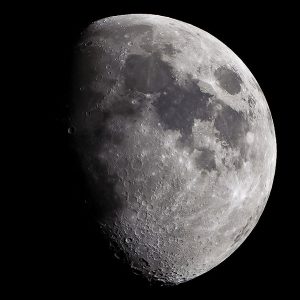China’s robotic lunar probe Chang’e-5 has returned to earth. According to a China National Space Administration statement quoted by the China Daily, the mission’s reentry capsule landed at a preset site in Siziwang banner in Inner Mongolia at 1:59 am (local time) on December 17. The 23-day Change’e-5 mission’s goal was to collect lunar samples and bring them back to earth. The last probe before the latest Chinese mission to collect lunar samples and return them to earth was Soviet Union’s Luna 24 robotic probe in 1976.
Chang’e-5 marks a watershed moment in China’s space program and comes at a time when the United States also seeks to aggressively fast-track its own.
Congratulating the team behind the mission, China’s President Xi Jinping expressed hope that it will “contribute to building the country into a major power in space, national rejuvenation, the peaceful use of space and the building of a community with a shared future for humanity,” the China Daily has noted. While many conversations around China and the United States in space have focused on competitive, even military, aspects of a new “space race,” some in the United States admit that space exploration could be one arena where both countries could cooperate, and perhaps even use it to mitigate other tensions in the relationship.
Reporting on the return of the Change’e-5 reentry module, the New York Times quoted NASA Administrator Jim Bridenstine saying at a talk on Tuesday: “…I do believe NASA is a tool of diplomacy. I believe that asset is a tool that can be used as, for example, a pot sweetener for a trade deal. I think it can be used for all kinds of purposes for international diplomacy.” Reacting to the news, Alice Wells, a former senior U.S. diplomat who had served as an assistant secretary of state in the Trump administration, tweeted: “It is not too late to reestablish space as a frontier for cooperation between otherwise adversarial states. We do so with the Russians, and should do the same with China.”
But that possibility increasingly looks remote after the Trump administration, skirting very closely to violating the Outer Space Treaty of 1967, issued an executive order in April this year allowing the moon to be mined and other resources extracted from space. In a new National Space Policy issued after a decade, on December 9, the Trump administration has also put a distinct accent on commercial payoffs from space missions. Indeed, analysts claim that resource extraction from the moon is one of China’s key aims behind its lunar plans. However – as I recently wrote, also in the context of the Chang’e-5 mission – the economics and commercial feasibility of such plans remain murky — for China, U.S., or anyone else, including private-sector players, contemplating it.
Differing political cultures – including divergent norms around secrecy and transparency – could also stand in the way of greater China-U.S. collaboration on space issues; readers interested in a fictional (not to mention, rather improbable) scenario that illustrates how the Chinese bureaucracy could react to a fundamental space-related scientific discovery are encouraged to read a March piece in these pages from me.
For now, the scientific community will have to wait for announcements of discoveries of the Chang’e-5 mission in the pages of scholarly international journals.

































